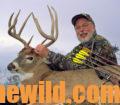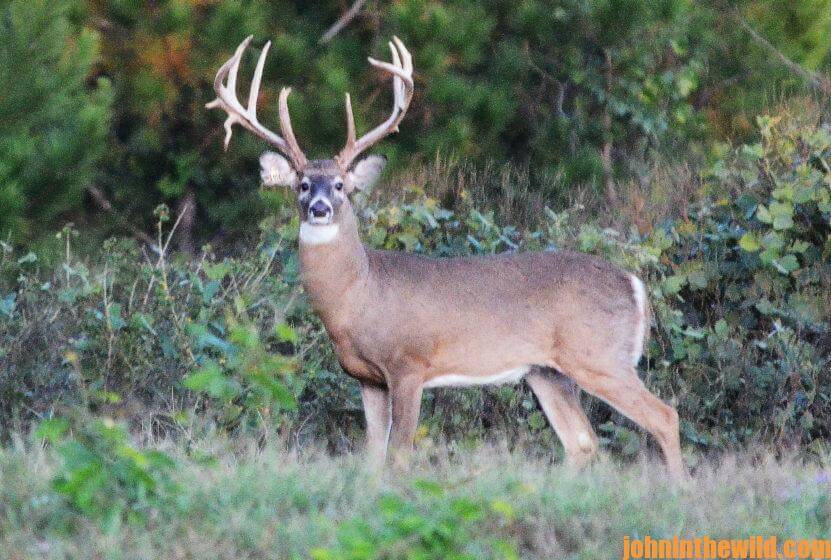Editor’s Note: Even if you find a really-big buck, you may have a difficult time remembering all the places where that buck scrapes, feeds, beds, finds does and creates trails.
Secret # 5 – Don’t Bet on Your Memory:
To help you locate and bag that buck, build a database on him with a GPS receiver. Every time you spot that big buck or its tracks, scrapes or rubs, take a GPS 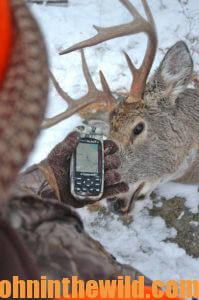 reading. Number that GPS reading, make it a waypoint, and name it with a code you can understand. For instance, when hunting only one trophy buck, you can put something like “BB” for big buck, “S” for scrapes, “R” for rubs, “T” for tracks and “S” for sightings. Then when you arrive home, record the number of the GPS locations, the meanings of your codes, the weather conditions and other pertinent information that you have about that big buck in a hunter’s log or a computer program. As you compile information and analyze your data, you’ll begin to notice patterns that will tell you where and when you need to hunt this buck. The GPS receiver makes one of the best aids for taking trophy bucks – if you use it properly. The more you use your GPS, the better woodsman you’ll become, and the more you’ll increase your odds for bagging a big buck.
reading. Number that GPS reading, make it a waypoint, and name it with a code you can understand. For instance, when hunting only one trophy buck, you can put something like “BB” for big buck, “S” for scrapes, “R” for rubs, “T” for tracks and “S” for sightings. Then when you arrive home, record the number of the GPS locations, the meanings of your codes, the weather conditions and other pertinent information that you have about that big buck in a hunter’s log or a computer program. As you compile information and analyze your data, you’ll begin to notice patterns that will tell you where and when you need to hunt this buck. The GPS receiver makes one of the best aids for taking trophy bucks – if you use it properly. The more you use your GPS, the better woodsman you’ll become, and the more you’ll increase your odds for bagging a big buck.
Secret #6 – Don’t Act Stupid When Hunting Deer:
What’s the first thing you think when someone tells you about the latest hunting technique, a new hunting aid or a unique device designed to help you take more and bigger deer? More than likely, you’ll say, “That will never work.” At that point, you become stupid, which I define as an individual who refuses to learn. The hunters who bag the most big bucks every season constantly try-out new hunting strategies and new equipment. Not all new hunting techniques or products will make the buck of your lifetime appear magically. However, many new hunting aids and tactics can increase your odds for taking a buck. Butt test new tactics or products durin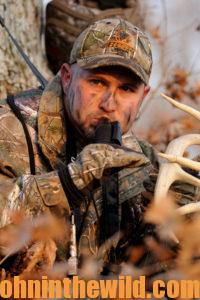 g hunting season. Instead, try these out after deer season ends. If you’re wondering if rattling, grunting, using deer lures and/or decoys or employing other hunting techniques will work on trophy bucks, use them after the season when whether or not they work doesn’t matter. Remember that duck calls and decoys don’t always cause mallards to come swarming in to your duck blind. Nor do turkey calls and turkey decoys always bring longbeard gobblers within gun range. But these tactics will work some of the time. So, try them.
g hunting season. Instead, try these out after deer season ends. If you’re wondering if rattling, grunting, using deer lures and/or decoys or employing other hunting techniques will work on trophy bucks, use them after the season when whether or not they work doesn’t matter. Remember that duck calls and decoys don’t always cause mallards to come swarming in to your duck blind. Nor do turkey calls and turkey decoys always bring longbeard gobblers within gun range. But these tactics will work some of the time. So, try them.
Secret #7 – Change Times to Hunt Deer:
Although most deer hunters hunt just before the sun rises until just after the sun sets, these hunters often don’t take trophy bucks because they work the old, dawn-to-dusk shift with a 2-4-hour break in the middle of the day. If you receive pay for deer hunting as your job and work the same shift that everyone else does, then you can expect to receive the same pay that everyone else does. However, if you work the shifts no one else wants to work, you’ll receive more pay. These shifts pay the most big-buck dividends for successful big-buck hunters:
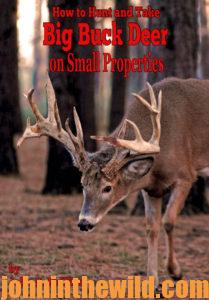 * Go to your tree stand an hour before any other hunter moves to the woods;
* Go to your tree stand an hour before any other hunter moves to the woods;
* Stay in your tree stand an hour longer than any other hunter remains in his or her tree stand;
* Learn to go to and leave from your stand in the dark. (The hand-held GPS receiver solves this problem);
* Remain in your stand all day. If you’ve prepared all year to take a trophy buck, you’re really going to feel bad if he passes by your stand when you’re not in it. Remember this equation: a butt in a tree stand often equals a trophy buck in the back of a pickup truck.
To learn more about hunting deer, check out John E. Phillips’ book, “How to Hunt and Take Big Buck Deer on Small Properties,” available in Kindle, print and Audible versions at (http://amzn.to/1vIcj4m).
Tomorrow: Secrets #8, 9 & 10 – Learn Places to Bag Big Deer – Croplands, Roads and Cattle Pastures

